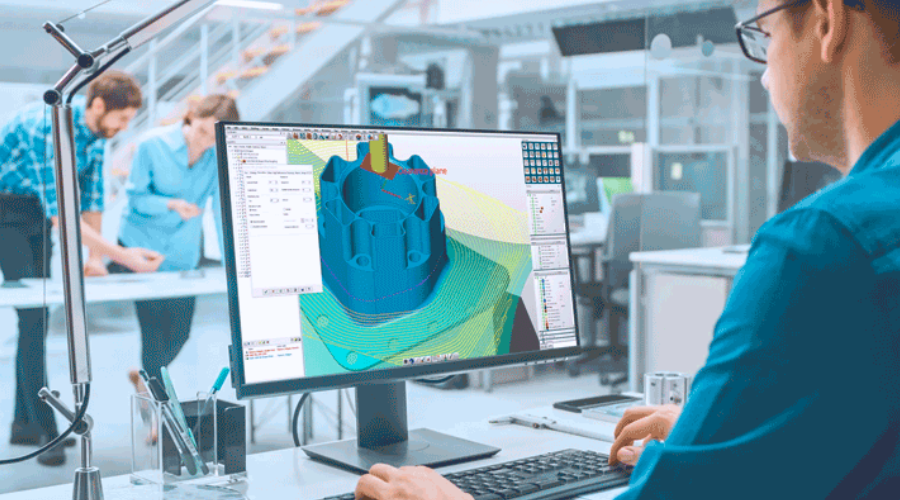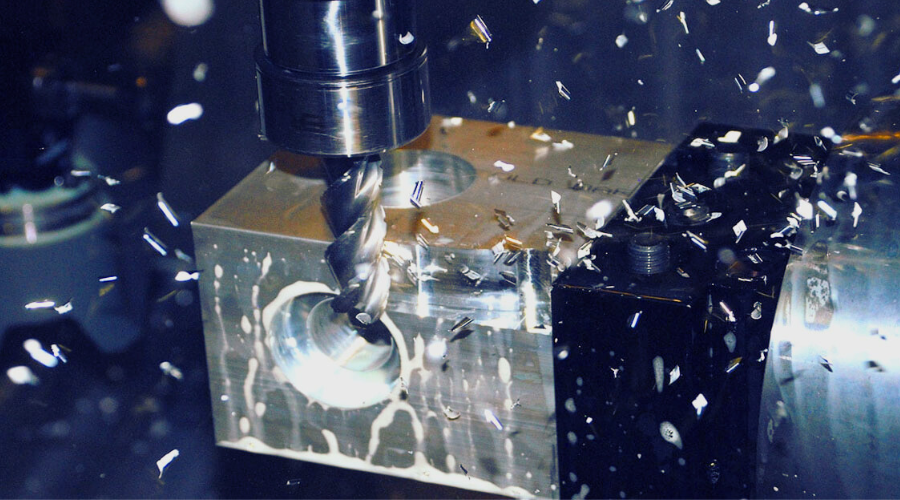Contents
CNC(Computer Numerical Control) machining is a manufacturing process where pre-programmed software and code control the movement of production equipment. This technology is pivotal in the production of complex parts, providing precision, efficiency, and automation.
For industry professionals, understanding the advanced aspects of CNC machining is crucial for staying competitive. As the technology evolves, knowledge of the latest innovations ensures improved production capabilities, reduced downtime, and higher quality outputs.

Advanced Technical Questions
- What are the latest advancements in CNC machining technology?
Recent advancements in CNC machining include the integration of AI and machine learning, which enhance predictive maintenance and optimize machining parameters. The use of high-speed and multi-axis operations, as well as hybrid machining that combines CNC and 3D printing, is expanding capabilities and reducing production times. For instance, the introduction of micro-laser machines allows for intricate and precise work, significantly improving the quality of micro-features in parts.
- How does adaptive machining enhance the precision and efficiency of CNC processes?
Adaptive machining utilizes real-time data to adjust machining parameters dynamically. This approach improves precision by compensating for any deviations during the machining process. It also enhances efficiency by optimizing tool paths and cutting conditions based on the material and design specifications. Companies like CloudNC have developed AI-driven solutions that significantly reduce programming time, thus streamlining operations.
- What role does CAD/CAM software play in modern CNC machining?
CAD (Computer-Aided Design) and CAM (Computer-Aided Manufacturing) software are integral to modern CNC machining. These tools allow for detailed design and efficient translation of designs into machine instructions. Recent software advancements have improved toolpath algorithms and integration with IoT devices, enhancing both precision and production speed

Material and Process-Specific Questions
- What are the best practices for machining high-performance alloys and composites?
Machining high-performance alloys and composites requires advanced tooling and techniques to manage their unique properties. Best practices include using appropriate cutting tools, optimizing cutting speeds and feeds, and employing coolant systems to reduce thermal effects. Automation and robotics can also assist in maintaining consistency and precision.
- How does micro-machining differ from traditional CNC machining?
Micro-machining involves the production of extremely small and precise components, often using specialized machines like micro-lasers. These machines can create features at the micron level, which traditional CNC machines cannot achieve. This process is crucial in industries requiring high precision, such as medical devices and aerospace .
- What are the key considerations for implementing 5-axis CNC machining?
Implementing 5-axis CNC machining requires careful consideration of machine capabilities, tooling, and software. This technology allows for complex part production in a single setup, reducing the need for multiple machines and manual interventions. Key considerations include ensuring machine rigidity, optimizing tool paths, and using advanced CAM software to fully leverage the machine’s capabilities.
Quality Control and Maintenance
- What are the most effective methods for ensuring precision and repeatability in CNC machined parts?
Effective methods include regular calibration of machines, using high-quality tooling, and implementing strict quality control protocols. Advanced software and real-time monitoring systems can also enhance precision and repeatability by detecting and correcting errors during the machining process.
- How can predictive maintenance be integrated into CNC machining operations?
Predictive maintenance involves using sensors and AI to monitor the condition of machines and predict failures before they occur. This approach reduces downtime and maintenance costs by scheduling maintenance activities based on actual machine conditions rather than fixed intervals. Companies are increasingly adopting IoT and machine learning to implement these systems.
- What are the common causes of CNC machining errors and how can they be mitigated?
Common causes of errors include tool wear, incorrect machine settings, and programming mistakes. Mitigation strategies involve regular tool maintenance, thorough machine calibration, and using advanced simulation and verification software to detect errors before production begins

Industry Applications and Trends
- How is CNC machining revolutionizing the aerospace and automotive industries?
CNC machining is critical in the aerospace and automotive industries due to its ability to produce complex, high-precision parts efficiently. Innovations like high-speed machining and the use of advanced materials (e.g., titanium and composites) have significantly improved performance and reduced production times. The integration of AI and automation further enhances productivity and precision.
- What are the environmental considerations in CNC machining?
Environmental considerations include reducing material waste, recycling coolants, and using energy-efficient machines. Sustainable practices such as hybrid machining and the use of eco-friendly materials are also becoming more prevalent. Companies are focusing on these aspects to reduce their carbon footprint and comply with environmental regulations.
- How is the integration of IoT and Industry 4.0 transforming CNC machining?
The integration of IoT and Industry 4.0 is transforming CNC machining by enabling smart factories where machines are interconnected and data-driven. This transformation enhances process optimization, predictive maintenance, and quality control. Real-time data analysis and remote monitoring capabilities improve efficiency and reduce downtime, making manufacturing processes more agile and responsive.
Conclusion
CNC machining continues to evolve with advancements in technology, materials, and processes. Staying updated with these developments is crucial for industry professionals to maintain competitiveness and drive innovation. Embracing new technologies, understanding advanced machining techniques, and implementing robust quality control measures are essential steps for further professional development and success in the field. For those interested in deepening their knowledge, continuous learning and training are highly recommended.
HordRT provides a wide range of precision CNC machining services, including CNC milling, CNC turning, EDM, wire cutting, and surface grinding. Equipped with advanced 3-axis, 4-axis, and 5-axis CNC machining centers and a highly skilled team, we can produce any custom design, whether simple or complex. If you have any CNC parts that need manufacturing, we are here to help.
-q4gvl4k29y4hq8j9rjpapvj0ft06fje63olt7p210i.png)

